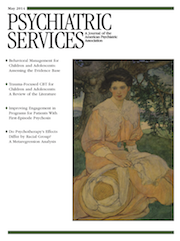Fetal Alcohol Exposure Among African Americans
Having worked with poor, African-American patients in various educational, mental health, correctional, and foster care settings for more than 40 years, I feel obligated to draw attention to a major public health phenomenon that plagues these populations: fetal alcohol exposure (FAE). FAE is a hidden epidemic in poor African-American communities, where liquor stores are a ubiquitous and thriving business.
I have looked back at data from research conducted in 1979 for the Chicago Board of Education’s Pupil Service Center, which evaluated children in special education on Chicago’s South Side. It is now apparent that at least 55% of the 274 children I evaluated probably had FAE. A 2011 chart audit for 162 children in several school clinics estimated that 39% also had FAE. In 2012, before closure of the Community Mental Health Council, Inc., a chart audit of 330 randomly selected patients showed that 12% met criteria for FAE. Most recently, work on an inpatient psychiatric unit at St. Bernard Hospital—in the heart of Englewood, one of the poorest African-American communities in Chicago—revealed that among 93 consecutively admitted patients, 32% met the DSM-5 “condition for further study,” neurobehavioral disorder associated with prenatal alcohol exposure (NDA-PAE). Further, in a random sample of 20% of 500 outpatients consecutively seen at Jackson Park Hospital's Family Practice Clinic, 29% of patients met NDA-PAE criteria.
From consultant work at the Cook County Juvenile Detention Center, I have learned that two-thirds to three-quarters of the youths have speech and language problems, ADHD, intellectual disability, and specific learning disorders. The leading cause of these disorders is FAE. The prevalence of NDA-PAE among children seen in child protective services has thus far eluded detection. However, experience with psychiatric clinic patients who have been involved with child protective services suggests that these rates are also high.
These point prevalence studies conducted in African-American communities are critical for two reasons. First, they underline an important point made by U.S. Surgeon General David Satcher at his September 2000 Conference on Children's Mental Health: to have an impact on public health, we should address the problems found among children in special education, corrections, and child protective services. And, I would add, mental health. Second, research evidence is accumulating that giving pregnant women choline, folate, and vitamin A may ameliorate the outcome of FAE. These supplements may also help patients with NDA-PAE.
FAE is the largest preventable public health problem in poor African-American communities. I suspect the same is true for U.S. and Canadian Native American communities—but because I lack direct experience, I cannot speak for them. However, I am sure that someone can and will.



